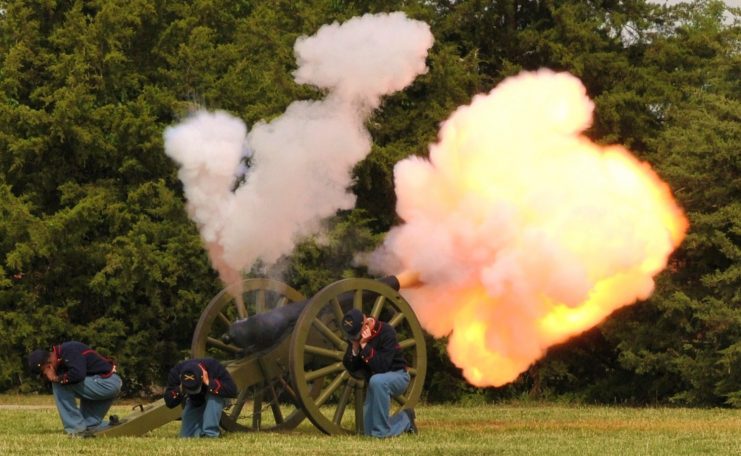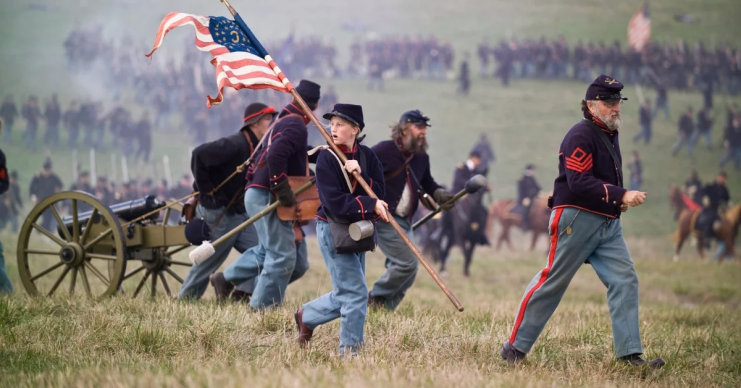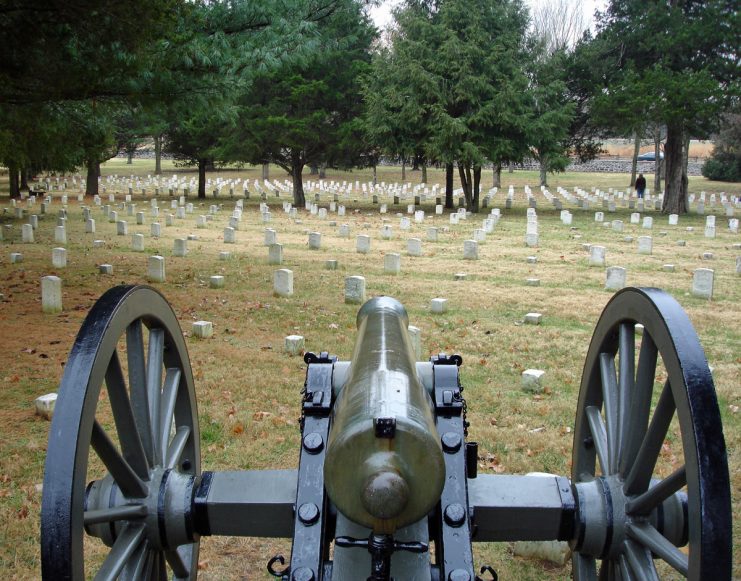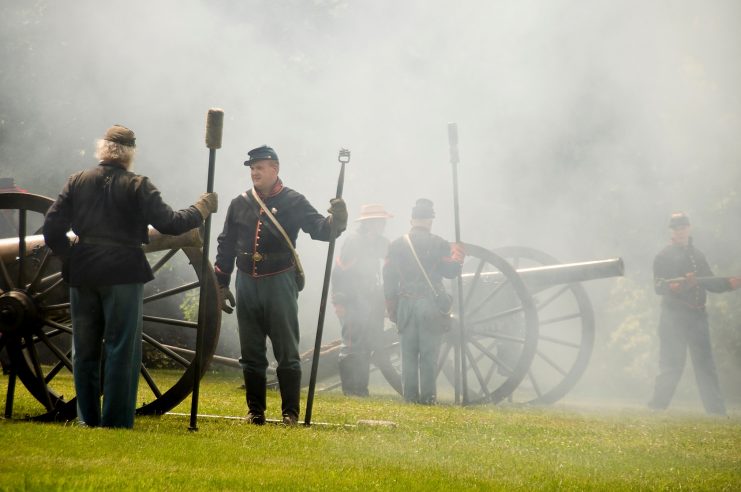Sam White was a dyed-in-the-wool Civil War fanatic. He was never happier than when he was searching for Civil War relics or restoring those that he had found.
Sadly, 12 years ago in February 2008, his hobby cost him his life, when a cannonball that he was restoring exploded, killing him instantly.
Sam, who lived in Chester, a pretty suburb of Richmond in Virginia, would scour the countryside around his home looking for buttons, bullets, flags, and even artillery shells that have lain in the earth undisturbed for 140 years.
His desire for Civil War artifacts also drove him to don scuba gear and search the rivers for any interesting bits and pieces.

Harry Ridgeway, a fellow relic hunter, said that there are very few places in the Southern States of American that were not battlefields during the Civil War. He shared the thrill of finding relics with Sam and thousands of other Civil War buffs.
Back in February 2008, 53-year-old Sam White very sadly lost his life while trying to restore a cannonball. One hundred forty years after it was fired, the explosives contained within the ball were still powerful enough to blast a piece of shrapnel a quarter of a mile, where it landed on the porch of a house.
Colonel John F. Biemeck, who retired from the Army Ordnance Corps, said that merely dropping one on the ground is not enough to make it explode.
White’s death sent shock waves through the very close-knit community of Civil War relic hunters. It also brought the issue of Civil War munitions and the safety of those munitions into the public sphere.
There are still tons of this type of explosive littered around Civil War battlefields. Yet, explosives experts have said that the odds of one of these artillery pieces exploding are extraordinary.
In the period 1861 to 1865, Confederate troops from the southern states and Union forces from the north blasted an estimated 1.5 million artillery pieces at each other, some on land and some on the water.
Journals from that period indicate that as many as one in five of the fired pieces were duds and did not explode on contact.

There are many cannonballs and other artillery shells recovered regularly. In March of this year, a substantial 8-inch mortar shell weighing 44-pounds was retrieved from the site of the 292-day Siege of Petersburg. This shell was safely detonated.
The cannonballs and other artillery shells of this period were filled with a mixture of potassium nitrate, sulfur, and charcoal, commonly known as black powder.
Black powder does not explode easily, and it needs a combination of friction and extremely high temperature – 572°F to cause it to detonate.

Sam’s friends never saw anything to give cause for concern over his work in restoring cannonballs.
Sam’s family often watched him work on these restorations, and it is estimated that he had restored around 1,600 shells for collectors.
Jimmy Blankenship, the curator and resident historian at the Petersburg battlefield, said that Sam knew Civil War munitions very well.
As this was an explosion, there was a full investigation by the Bureau of Alcohol, Tobacco, and Firearms. Police that attended the scene examined the shrapnel and concluded that it was an explosion by a Civil War munition that caused his death.

White was working on the restoration and disarming of a 75-pound, 9-inch naval shell. These contained a potent explosive, that was many times more destructive than that used in shells used on land, along with a complex fuse
There has been speculation about what White was trying to do when he died. Colonel Biemeck and Peter George, who co-authored a book on munitions used during the Civil War, suspect that White was using a drill or a grinder to remove debris from the cannonball.
The intricate fuse design may also have led White to incorrectly conclude that there was no powder left in the ball.
This, in conjunction with the shower of sparks from the drill, could have been enough to cause the cannonball to explode.
As this was a naval shell, the ball would have been watertight, as it was designed to fly over the water at high speed and strike an enemy ship along the waterline. This protective cover would have ensured that the black powder inside was protected from degradation by the elements.
Sam White’s widow, Brenda, convinced that her husband did nothing wrong and that there was an inherent manufacturing defect in the shell that he could not possibly have known about. She said that he had disarmed the shell before it exploded.
Yours for Just $1.3 Million 1944 Grumman Wildcat
Following Sam’s death, the neighboring houses were evacuated, while experts removed all the artillery pieces from his collection and detonated them safely.
